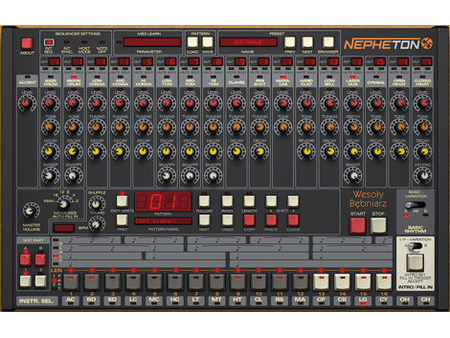Dirty grime production tips
Get the authentic East London sound

Click here for all 'Production tips in every style' lessons
Emerging from the underground UK music scene at the end of the 20th Century, grime is the generic name applied to a particular blend of hip-hop, ragga and UK garage.
It's typically either instrumental or MC-based music, produced at around 140bpm and featuring hard beats, big basslines and, usually, a tighter, more regimented groove than UK garage's typical swing beat.
For the benefit of aspiring grime producers - and we know that there are plenty of you out there - MusicRadar has put together this list of six essential production tips.
1. Similar to most forms of popular music, the 'standard' arrangement for a grime track is: intro, chorus, verse, chorus, verse, chorus, verse, chorus and outro. Verses tend to last 16 bars, while choruses, intros and outros last eight. This is only a general rule, but it makes for a good starting point. Feel free to experiment.
2. Many grime productions use Roland TR-808 sounds - either as a source of sub-basslines or, sometimes, as a complete drum kit. d16 Group's sensational recreation of Roland's seminal box, Nepheton, sounds incredible and even goes beyond the original, with a wider range of controls.
3. If you're mixing drum and percussion sounds from disparate sources, it's advisable to route them all to one group bus. Not only will this enable you to control the level of all your drums with one fader, it will also give you the option to add subtle processors, such as compression, tape saturation or reverb, that help glue the pieces together.
Get the MusicRadar Newsletter
Want all the hottest music and gear news, reviews, deals, features and more, direct to your inbox? Sign up here.
4. To keep your beat sounding contemporary, look out for unnatural sounds to use in your kit. You may have noticed that synthesized kicks work better than kick drum samples, because they tend to be cleaner and stronger - which is a required property of grime drums, after all. What you may have overlooked are smaller, electronic percussive sounds. Cowbells, rimshots, ride cymbals and 80s drum machine zaps can help fill out a busy groove.
5. With bass-heavy music such as grime, it's always a good idea to cut away the very bottom end on sounds that aren't supposed to provide bass. This clears space for the kick and bassline to pound through. Boost a narrow band and scan up and down to find other spots to cut for added clarity.
6. For that wide, clean, Danny C-style vocal sound, it's essential to use a modulation effect, such as chorus or flanging. The most important rule with this is to keep it as subtle as possible. The idea is to make the vocal sound bigger, without being obviously spread - you should hear almost no difference until you take it away.
MusicRadar is the number one website for music-makers of all kinds, be they guitarists, drummers, keyboard players, DJs or producers...
- GEAR: We help musicians find the best gear with top-ranking gear round-ups and high-quality, authoritative reviews by a wide team of highly experienced experts.
- TIPS: We also provide tuition, from bite-sized tips to advanced work-outs and guidance from recognised musicians and stars.
- STARS: We talk to musicians and stars about their creative processes, and the nuts and bolts of their gear and technique. We give fans an insight into the craft of music-making that no other music website can.










